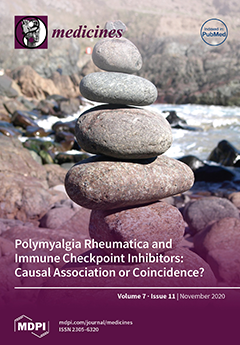Background: According to past studies, recovery and survival following severe vascular events such as acute myocardial infarction and stroke are negatively impacted by vitamin D deficiency. However, the national estimate on disability-related burden is unclear. We intend to evaluate the prevalence and outcomes of vitamin D deficiency (VDD) among patients with cardiovascular disease (CVD) and cerebrovascular disorder (CeVD).
Methods: We performed a cross-sectional study on the Nationwide Inpatient Sample data (2016–2017) of adult (≥18 years) hospitalizations. We identified patients with a secondary diagnosis of VDD and a primary diagnosis of CVD and CeVD using the 9th revision of the International Classification of Diseases, clinical modification code (ICD-10-CM) codes. A univariate and mixed-effect multivariable survey logistic regression analysis was performed to evaluate the prevalence, disability, and discharge disposition of patients with CVD and CeVD in the presence of VDD.
Results: Among 58,259,589 USA hospitalizations, 3.44%, 2.15%, 0.06%, 1.28%, 11.49%, 1.71%, 0.38%, 0.23%, and 0.08% had primary admission of IHD, acute MI, angina, AFib, CHF, AIS, TIA, ICeH, and SAH, respectively and 1.82% had VDD. The prevalence of hospitalizations due to CHF (14.66% vs. 11.43%), AIS (1.87% vs. 1.71%), and TIA (0.4% vs. 0.38%) was higher among VDD patients as compared with non-VDD patients (
p < 0.0001). In a regression analysis, as compare with non-VDD patients, the VDD patients were associated with higher odds of discharge to non-home facilities with an admission diagnosis of CHF (aOR 1.08, 95% CI 1.07–1.09), IHD (aOR 1.24, 95% CI 1.21–1.28), acute MI (aOR 1.23, 95% CI 1.19–1.28), AFib (aOR 1.21, 95% CI 1.16–1.27), and TIA (aOR 1.19, 95% CI 1.11–1.28). VDD was associated with higher odds of severe or extreme disability among patients hospitalized with AIS (aOR 1.1, 95% CI 1.06–1.14), ICeH (aOR 1.22, 95% CI 1.08–1.38), TIA (aOR 1.36, 95% CI 1.25–1.47), IHD (aOR 1.37, 95% CI 1.33–1.41), acute MI (aOR 1.44, 95% CI 1.38–1.49), AFib (aOR 1.10, 95% CI 1.06–1.15), and CHF (aOR 1.03, 95% CI 1.02–1.05) as compared with non-VDD.
Conclusions: CVD and CeVD in the presence of VDD increase the disability and discharge to non-home facilities among USA hospitalizations. Future studies should be planned to evaluate the effect of VDD replacement for improving outcomes.
Full article




